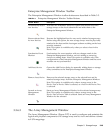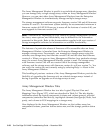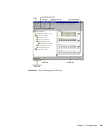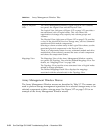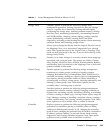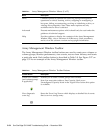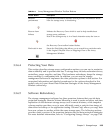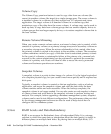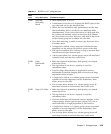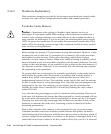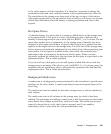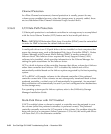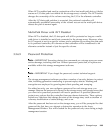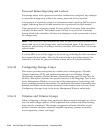
Chapter 3 Storage Arrays 3-57
operations overlap and performance improves. If a disk drive in a volume group
fails, the redundant or parity data can be used to regenerate the user data on
replacement disk drives.
RAID relies on a series of configurations, called levels, to determine how user and
redundancy data is written and retrieved from the drives. Each level provides
different performance and protection features. The storage management software
offers four formal RAID level configurations: RAID levels 0, 1, 3, and 5. Table 3-9
describes these configurations.
RAID levels 1, 3, and 5 write redundancy data to the drive media for fault tolerance.
The redundancy data might be a copy of the data or an error-correcting code derived
from the data. If a drive fails, the redundancy data can be used to quickly
reconstruct information.
Only one RAID level can be configured across each volume group. Each volume
group stores its own redundancy data. The capacity of the volume group is the
aggregate capacity of the member drives, minus the capacity reserved for
redundancy data. The amount of capacity needed for redundancy data depends on
the RAID level used.



